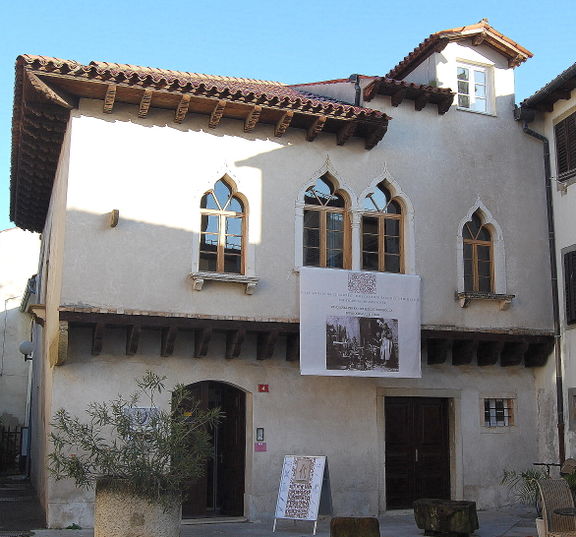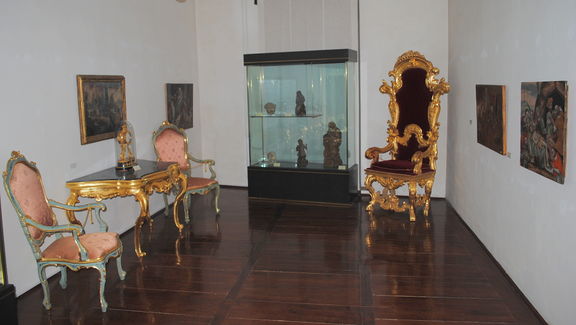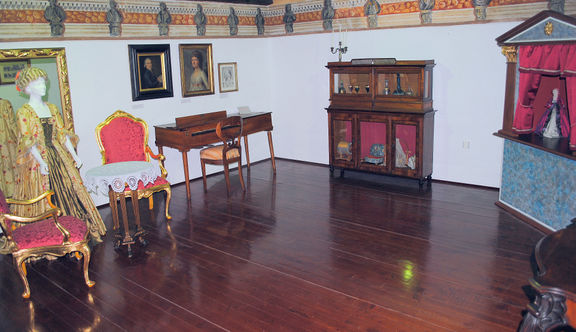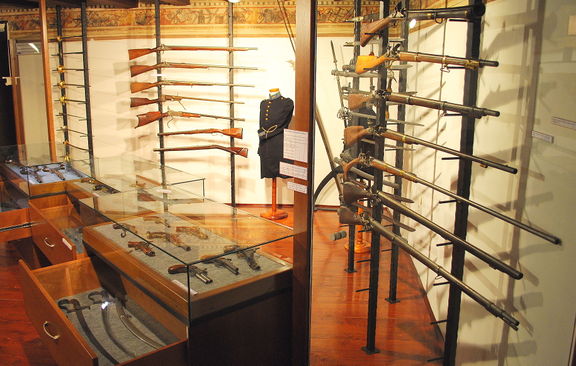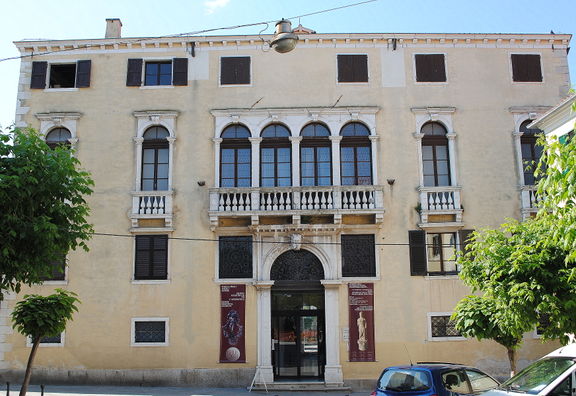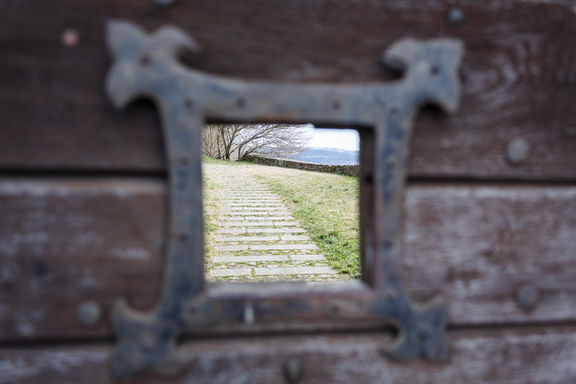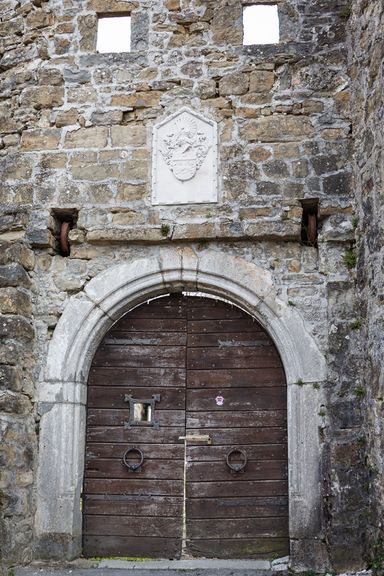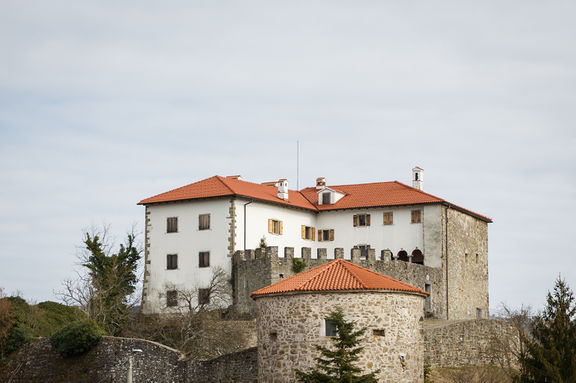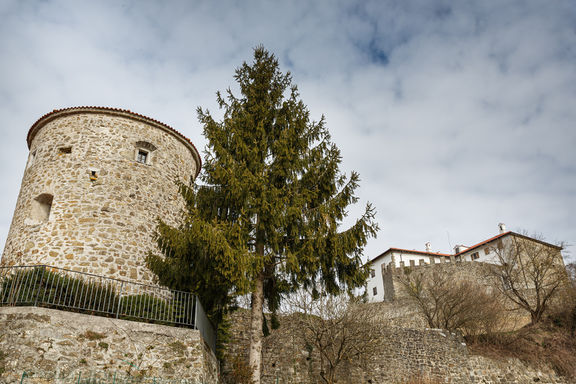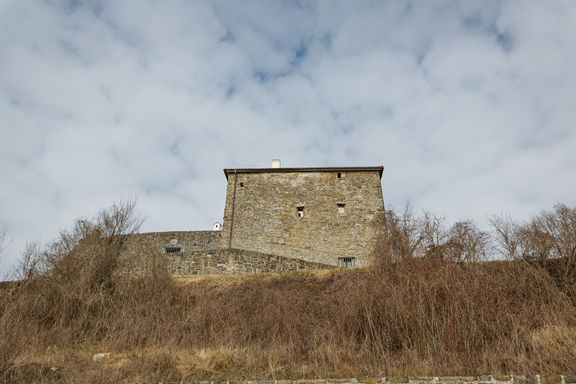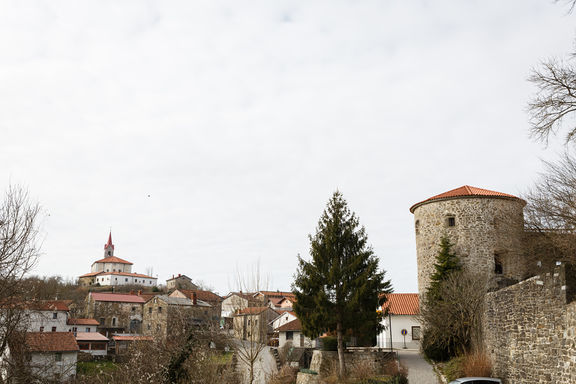Difference between revisions of "Koper Regional Museum"
Anže Zorman (talk | contribs) (Minor upgrade) |
|||
| Line 15: | Line 15: | ||
| website = http://www.pokrajinskimuzej-koper.si/ | | website = http://www.pokrajinskimuzej-koper.si/ | ||
| managed by = Municipality of Koper-Capodistria | | managed by = Municipality of Koper-Capodistria | ||
| − | | opening hours = | + | | opening hours = 8am–4pm Tue–Fri and 10am–2pm Sat–Sun- Closed Mon and bank holidays |
| contacts = {{Contact | | contacts = {{Contact | ||
| name = Luka Juri | | name = Luka Juri | ||
| Line 39: | Line 39: | ||
{{Teaser| | {{Teaser| | ||
| − | {{Image|Koper Regional Museum - 09.jpg}} | + | {{Wide Image|Koper Regional Museum - 09.jpg}} |
| − | Originating in [[Established::1911]] as the Municipal Museum of History and Art (Museo Civico di Storia e d'Arte), the [[Koper Regional Museum]] has been | + | Originating in [[Established::1911]] as the Municipal Museum of History and Art (Museo Civico di Storia e d'Arte), the [[Koper Regional Museum]] has been since 1954 housed in the spacious early 17th-century Belgramoni Tacco Palace, and is responsible for the movable cultural heritage in the Primorska region. |
}} | }} | ||
== History == | == History == | ||
| + | |||
The first initiatives to establish a museum in Koper-Capodistria took place as early as the late 18th century, but the main push for its foundation was provided by the first exhibition of the Istrian Region in Koper (Prima Esposizione Provinciale Istriana) in 1910. One year later the then [[Municipality of Koper-Capodistria]] established the Municipal Museum of History and Art (Museo Civico di Storia e d'Arte), and after the First World War the spacious early 17th century Belgramoni Tacco Palace building was set aside for use as a museum. | The first initiatives to establish a museum in Koper-Capodistria took place as early as the late 18th century, but the main push for its foundation was provided by the first exhibition of the Istrian Region in Koper (Prima Esposizione Provinciale Istriana) in 1910. One year later the then [[Municipality of Koper-Capodistria]] established the Municipal Museum of History and Art (Museo Civico di Storia e d'Arte), and after the First World War the spacious early 17th century Belgramoni Tacco Palace building was set aside for use as a museum. | ||
| − | During the Second World War the permanent collection was seriously impaired when many precious works of art were evacuated to Friuli (Villa Manin in Passariano). When "Zone B" was incorporated into Slovenia in 1954, the museum was renamed the District Museum, and in 1967 its name was changed to The Regional Museum of Koper (Museo Regionale di Capodistria). From 1981–1985 the museum's central building was completely renovated and this made it possible to expand the museum's activities and to rearrange its collections. | + | During the Second World War the permanent collection was seriously impaired when many precious works of art were evacuated to Friuli (Villa Manin in Passariano). When "Zone B" was incorporated into Slovenia in 1954, the museum was renamed the District Museum, and in 1967 its name was changed to The Regional Museum of Koper (Museo Regionale di Capodistria). From 1981–1985 the museum's central building was completely renovated and this made it possible to expand the museum's activities and to rearrange its collections. The museum was thoroughly renovated once again in 2015. |
== Mission == | == Mission == | ||
| − | |||
| − | + | In addition to art and cultural history of the Primorska region, the museum covers the archaeological, historical, ethnological, and cultural heritage of the coastal and karst areas. A lot of attention is being paid to the various involvements in cultural, scientific, and educational establishments and projects. | |
| − | + | Today, the parent museum building presents an archaeological collection and collections covering the history of culture, art and history of Istra from its very beginning to the end of the 19th century. The conservation restoration workshop preserves the museum material and organises the technical days and workshops at the temporary exhibitions in the context of educational activities. | |
== Venues == | == Venues == | ||
| − | The museum manages two satellites; in 1983 the [[Ethnological Collection of Koper Regional Museum]] was established as an independent branch and a permanent collection was opened in [[Prem Castle]] in 2008, presenting castles and building sites in the Reka river basin. | + | |
| + | The museum manages two satellites; in 1983 the [[Ethnological Collection of Koper Regional Museum]] was established as an independent branch and a permanent collection was opened in [[Prem Castle]] in 2008, presenting castles and building sites in the Reka river basin. There is also the Museum gallery, set just besides the Palace Belgramoni Tacco and used to present temporary exhibitions. | ||
| + | |||
| + | {{Image|Koper Regional Museum - 08.jpg}} | ||
== Collections == | == Collections == | ||
| − | |||
| − | + | The permanent exhibition ''Between the Serenissima, Napoleon and the Habsburgs'' covers the period from 16h to 19th century. It holds numerous artefacts from the daily life of the nobility and presents some of the most prominent residents of the area. There is also an exhibition of weapons from the same era, where for example one can trace the fast development of rifles in the 19th century. | |
| − | + | Very important are also the 'Art History Collections', which display and reflect on the great wealth of Istrian artistic heritage, from the second half of the 15th century onward. It is complemented by collections of arts and crafts works from the time of Renaissance and the Gothic. Among other permanent collections there is also one on musical life in the present-day coastal towns of Slovenia from the Middle Ages to the end of the 20th century. | |
The Archaeological collection covers all archaeological periods from prehistory (from palaeolithic to iron age) throughout Roman times to the middle ages in the Primorska region. One of the many significant archaeological finds is also the late Roman coin hoard, which derives from the late Roman army camp on the site Čentur. | The Archaeological collection covers all archaeological periods from prehistory (from palaeolithic to iron age) throughout Roman times to the middle ages in the Primorska region. One of the many significant archaeological finds is also the late Roman coin hoard, which derives from the late Roman army camp on the site Čentur. | ||
| − | In the pavilion along the Museum's lapidary, a collection of the recent history of the Southern Primorska region is presented, the fight for survival in Brkini, Slovenska Bistrica and Istra, portrayed also on ''Rapallo'' painting by [[Tone Kralj]], | + | In the pavilion along the Museum's lapidary, a collection of the recent history of the Southern Primorska region is presented, the fight for survival in Brkini, Slovenska Bistrica and Istra, portrayed also on the famous ''Rapallo'' painting by [[Tone Kralj]]. |
| + | |||
| + | The lapidary collection and the open air collection in the palace garden present the oldest material culture of the coastal and karst areas. The culture and art history collection consists of sculptures, paintings and arts and crafts products, arranged in chronological order and by theme, from early medieval sculptures with guilloche ornamentation (9th–11th centuries) to a fresco copy of ''The Dance of Death'' from Hrastovlje and inscriptions in the Glagolitic alphabet. | ||
| + | |||
| + | {{YouTube|x6jMTgEcEUY}} | ||
== Exhibitions == | == Exhibitions == | ||
| − | |||
| − | In 2010 a joint exhibition ''With a Fibula into Fable'' of Koper Museum and several other Slovenian museums ([[Sergej Mašera Maritime Museum, Piran|Sergej Mašera Maritime Museum]], [[Goriška Museum]], [[Tolmin Museum]], [[Ptuj – Ormož Regional Museum]], [[Notranjska Museum, Postojna]]) was prepared in collaboration with the Archaeological Museum of Istria and Civici Musei di Storia ed Arte di Trieste. The exhibition presented brooches which were found in Western Slovene area, adjacent to the Friuli region. It follows the development of fibulae in that area from prehistoric to Roman times and the early Middle Ages. The project was awarded by the [[Archaeological Society of Slovenia]]. | + | The museum regularly sets both its own as well as travelling exhibitions throughout the year. In 2010 a joint exhibition ''With a Fibula into Fable'' of Koper Museum and several other Slovenian museums ([[Sergej Mašera Maritime Museum, Piran|Sergej Mašera Maritime Museum]], [[Goriška Museum]], [[Tolmin Museum]], [[Ptuj – Ormož Regional Museum]], [[Notranjska Museum, Postojna]]) was prepared in collaboration with the Archaeological Museum of Istria and Civici Musei di Storia ed Arte di Trieste. The exhibition presented brooches which were found in Western Slovene area, adjacent to the Friuli region. It follows the development of fibulae in that area from prehistoric to Roman times and the early Middle Ages. The project was awarded by the [[Archaeological Society of Slovenia]]. |
| − | + | In recent years, there were exhibitions on the history of carriages, about the WWI battles in the Krn mountain range (the Isonzo front), about the local railway and so on. | |
| + | |||
| + | ==Virtual museum tour== | ||
| + | |||
| + | As of 2016, the museum itself (at least its main premises, the Belgramoni Tacco palace) has been thoroughly digitalised, as one can now embark on a virtual 3D tour of the museum. One can not only take a walk around the palace and the museum artefacts, specific information on particular pieces is also available, along a specially prepared audio guide. | ||
== See also == | == See also == | ||
| Line 84: | Line 93: | ||
== External links == | == External links == | ||
* [http://www.pokrajinskimuzej-koper.si/ Koper Regional Museum website] | * [http://www.pokrajinskimuzej-koper.si/ Koper Regional Museum website] | ||
| − | + | * [http://virtual.pokrajinskimuzejkoper.si/ A virtual tour around the Koper Regional Museum] | |
{{Gallery}} | {{Gallery}} | ||
Revision as of 21:42, 2 August 2016
-
to
6 Jul 2017
26 Aug 2017
The Heart of Koper in Moscow, an exhibition of the Koper Regional Museum, organized in cooperation with the Museum of Moscow and supported by the Embassy of the Republic of Slovenia Moscow,
-
to
1 Jul 2011
15 Sep 2011
With a Fibula into Fable exhibition organised by Koper Regional Museum, Sergej Mašera Maritime Museum, Goriška Museum, Tolmin Museum, Ptuj – Ormož Regional Museum, and Notranjska Museum, Postojna
History
The first initiatives to establish a museum in Koper-Capodistria took place as early as the late 18th century, but the main push for its foundation was provided by the first exhibition of the Istrian Region in Koper (Prima Esposizione Provinciale Istriana) in 1910. One year later the then Municipality of Koper-Capodistria established the Municipal Museum of History and Art (Museo Civico di Storia e d'Arte), and after the First World War the spacious early 17th century Belgramoni Tacco Palace building was set aside for use as a museum.
During the Second World War the permanent collection was seriously impaired when many precious works of art were evacuated to Friuli (Villa Manin in Passariano). When "Zone B" was incorporated into Slovenia in 1954, the museum was renamed the District Museum, and in 1967 its name was changed to The Regional Museum of Koper (Museo Regionale di Capodistria). From 1981–1985 the museum's central building was completely renovated and this made it possible to expand the museum's activities and to rearrange its collections. The museum was thoroughly renovated once again in 2015.
Mission
In addition to art and cultural history of the Primorska region, the museum covers the archaeological, historical, ethnological, and cultural heritage of the coastal and karst areas. A lot of attention is being paid to the various involvements in cultural, scientific, and educational establishments and projects.
Today, the parent museum building presents an archaeological collection and collections covering the history of culture, art and history of Istra from its very beginning to the end of the 19th century. The conservation restoration workshop preserves the museum material and organises the technical days and workshops at the temporary exhibitions in the context of educational activities.
Venues
The museum manages two satellites; in 1983 the Ethnological Collection of Koper Regional Museum was established as an independent branch and a permanent collection was opened in Prem Castle in 2008, presenting castles and building sites in the Reka river basin. There is also the Museum gallery, set just besides the Palace Belgramoni Tacco and used to present temporary exhibitions.
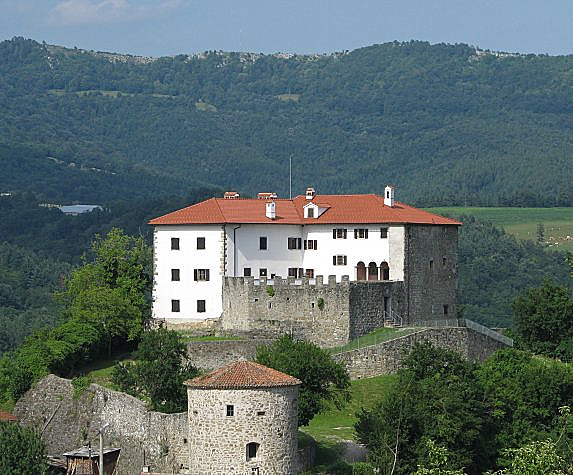 Prem Castle, built before 1213 with with exterior Renaissance walls and towers, Koper Regional Museum
Prem Castle, built before 1213 with with exterior Renaissance walls and towers, Koper Regional Museum
Collections
The permanent exhibition Between the Serenissima, Napoleon and the Habsburgs covers the period from 16h to 19th century. It holds numerous artefacts from the daily life of the nobility and presents some of the most prominent residents of the area. There is also an exhibition of weapons from the same era, where for example one can trace the fast development of rifles in the 19th century.
Very important are also the 'Art History Collections', which display and reflect on the great wealth of Istrian artistic heritage, from the second half of the 15th century onward. It is complemented by collections of arts and crafts works from the time of Renaissance and the Gothic. Among other permanent collections there is also one on musical life in the present-day coastal towns of Slovenia from the Middle Ages to the end of the 20th century.
The Archaeological collection covers all archaeological periods from prehistory (from palaeolithic to iron age) throughout Roman times to the middle ages in the Primorska region. One of the many significant archaeological finds is also the late Roman coin hoard, which derives from the late Roman army camp on the site Čentur.
In the pavilion along the Museum's lapidary, a collection of the recent history of the Southern Primorska region is presented, the fight for survival in Brkini, Slovenska Bistrica and Istra, portrayed also on the famous Rapallo painting by Tone Kralj.
The lapidary collection and the open air collection in the palace garden present the oldest material culture of the coastal and karst areas. The culture and art history collection consists of sculptures, paintings and arts and crafts products, arranged in chronological order and by theme, from early medieval sculptures with guilloche ornamentation (9th–11th centuries) to a fresco copy of The Dance of Death from Hrastovlje and inscriptions in the Glagolitic alphabet.
Exhibitions
The museum regularly sets both its own as well as travelling exhibitions throughout the year. In 2010 a joint exhibition With a Fibula into Fable of Koper Museum and several other Slovenian museums (Sergej Mašera Maritime Museum, Goriška Museum, Tolmin Museum, Ptuj – Ormož Regional Museum, Notranjska Museum, Postojna) was prepared in collaboration with the Archaeological Museum of Istria and Civici Musei di Storia ed Arte di Trieste. The exhibition presented brooches which were found in Western Slovene area, adjacent to the Friuli region. It follows the development of fibulae in that area from prehistoric to Roman times and the early Middle Ages. The project was awarded by the Archaeological Society of Slovenia.
In recent years, there were exhibitions on the history of carriages, about the WWI battles in the Krn mountain range (the Isonzo front), about the local railway and so on.
Virtual museum tour
As of 2016, the museum itself (at least its main premises, the Belgramoni Tacco palace) has been thoroughly digitalised, as one can now embark on a virtual 3D tour of the museum. One can not only take a walk around the palace and the museum artefacts, specific information on particular pieces is also available, along a specially prepared audio guide.






